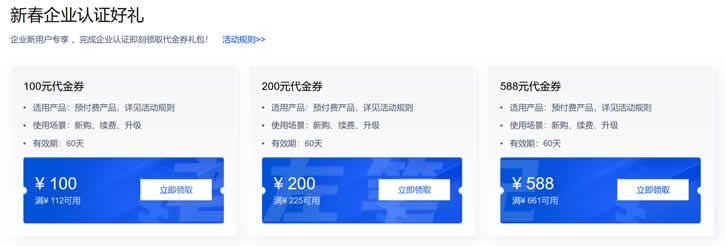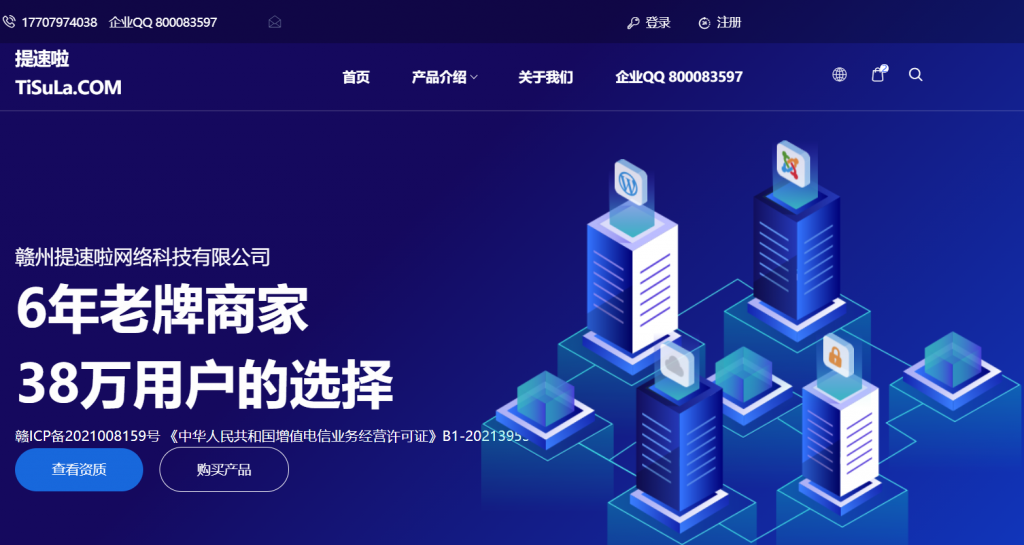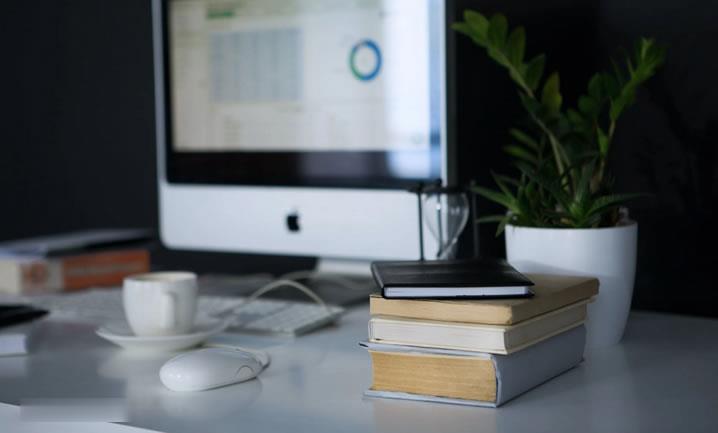configuredxp系统安装图解
WindowsXPDeploymentGuideForVMwareViewWHITEPAPERWHITEPAPER/2VMwareViewtransformsthewaycustomersuseandmanagedesktopoperatingsystems.
Desktopinstancescanbedeployedrapidlyinsecuredatacenterstofacilitatehighavailabilityanddisasterrecovery,protecttheintegrityofenterpriseinformation,andremovedatafromlocaldevicesthataresusceptibletotheftorloss.
Isolatingeachdesktopinstanceinitsownvirtualmachineeliminatestypicalapplicationcompatibilityissuesandimprovesusers'personalcomputingenvironments.
AboutThisGuideThisguidesuggestsbestpracticesforcreatingWindowsXP–basedtemplatesforusewithView5andlater.
CreatingtheInitialVirtualMachineTheinitialvirtualmachineestablishesavirtualhardwareprofileforrapiddeploymentofothervirtualdesktopinstances.
Youcancreatetheinitialvirtualmachinefromscratch,asdescribedinthisguide,orconvertaphysicalmachinetoavirtualmachine,usingeitherthestandaloneversionofVMwarevCenterConverterortheversionintegratedwithVMwarevCenter.
VMwareConverterimagesthetargetPCandmigratesitintoVMwarevSphere.
Whenthemigrationiscomplete,youcanconvertthevirtualmachinetoatemplateandthenuseitasthebasisfordeployingfuturevirtualdesktops.
Tocreatetheinitialvirtualmachinefromscratch,followthesesteps:1.
UsethevSphereClienttoconnecttoyourvCenterserver.
2.
Usetheconsoletoconfiguretheinitialvirtualmachineortemplate.
3.
InstalltheOSusingtheconsole.
WhenyouestablishaconnectionwithyourvSpheredatacenter,createanewvirtualmachinefrominventory.
Whenyoucreateavirtualmachine,theNewVirtualMachinewizardappears.
UsethecustomconfigurationparametersinTable1asbaselinesettingsforthetemplate.
IfyouuseView5.
xasyourvirtualdesktopmanagerfordeployingpooledvirtualdesktops,youcanchangethesesettingsatdeploymenttime.
Table1.
CustomConfigurationParametersParameterCommentsNameandLocationThiscanbeagenericname,suchasxptemplate.
Thelocationcanbeanyfolderwithinyourdatacenterinventory.
Host/ClusterTheVMwareESX/VMwareESXiserverorclusterofserverresourcesthatwillrunthisvirtualmachine.
Itcanbechangedatanytime.
Thislocationdoesnotnecessarilyspecifythelocationoffuturevirtualmachinescreatedfromthistemplate.
ResourcePoolIfthephysicalESX/ESXiserverresourcesaredividedgranularlyusingresourcepools,theycanbeassignedtothisvirtualmachine.
DatastoreThelocationwhereyouwanttostorethefilesassociatedwiththevirtualmachine.
GuestOperatingSystemTheoperatingsystemthatwillbeinstalled.
CPUsThenumberofvirtualprocessorsthatwillbepresentedtothevirtualmachine.
FormostViewusers,asingleprocessorissufficient.
WHITEPAPER/3ParameterCommentsMemoryTheamountofmemorytoallocatetoeachvirtualmachinecreatedfromthistemplate(inmostcases,512MB,forWindowsXP).
NetworkThenumberofvirtualnetworkadaptersthatwillbeused.
Oneisusuallyenough.
Asabestpractice,makethenetworknameconsistentacrossvSphere.
Anincorrectnetworknameinatemplatecancausefailuresduringtheinstancecustomizationphases.
I/OAdaptersTheLSILogicadapterissuedfordeploymentsbasedonViewisrecommended;however,theLSILogicdriverisnotincludedaspartoftheWindowsXPinstallationprocedure.
DownloadandadditduringtheOSinstallation.
DiskCreatesanewdiskwhenyoucreatetheinitialvirtualmachineortemplate.
Specifytheamountoflocalstoragetoallocatetoeachuser.
AllowatleastenoughfortheOSinstallation,patches,andlocallyinstalledapplications.
Abestpracticeistostoreasmuchoftheuser'sinformation,profile,anddocumentsonnetworksharesaspossible,ratherthanlocally.
Doingsocangreatlyreducetheneedfordiskspaceandmanagementoflocaldata.
InstallingWindowsXPVirtualmachinesbehavelikephysicalmachines,soWindowsXPinstallationisessentiallythesameonboth.
Althoughitispossibletoimageyourvirtualmachineusingsometypeofcloningtechnology,thisguidefocusesonafreshWindowsXPinstallation.
PreparationLSIstoragecontrollerdriversarenotavailableontheWindowsXPinstallationCD,sobesuretocompletethefollowingtasksbeforestartingtheinstallation:1.
DownloadtheLSI53C1030driversfromtheLSIWebsite.
2.
UsingMagicISOorotherthird-partysolutions,createan.
flpimagecontainingtheLSILogicdrivers.
3.
UseSCPtotransferthefloppyimagetothevirtualmachine'sESX/ESXihost.
IfyouareusingvCenter,youcanusethevSphereClienttouploadthefiletothedatastore.
4.
BesureyouhaveaWindowsXPCDorISOimagethatisaccessiblefromthevirtualmachine.
PreinstallationModificationstotheVirtualMachineMakethefollowingmodificationstothevirtualmachinehardwareprofilebeforestartingtheWindowsXPinstallation:1.
UsingthevSphereClient,connecttovCenter.
2.
Locatethevirtualmachineyoucreatedearlier.
3.
Editthefollowinghardwaresettings:a.
Ensurethatthereisafloppydrivepresent.
b.
Configurethefloppydrivetoconnectatpoweron.
c.
Ifusingafloppyimage,ensurethatthedevicetypeissettouseafloppyimageandispointingtotheLSIDriverimage.
d.
CheckthattheCD/DVDdriveispresentandconfiguredtoconnectatpoweron.
e.
ConfiguretheCD/DVDdevicetypetopointtotheWindowsXPCDorISOimage.
WHITEPAPER/4InstallationAfteryoucompletethepreinstallationpreparationandmodifications,youcaninstallWindowsXP:1.
FromthevSphereClient,connecttovCenter.
2.
Poweronthevirtualmachinecreatedearlier.
3.
Usetheconsoletoviewthebootprocessandtosendinputtothevirtualmachine.
4.
AstheWindowssetupprocessbegins,pressF6toaddanotherSCSIdriver.
ThisletsyouspecifytheLSILogicdriveronthefloppyimage.
TheWindowssetupprocesscopiesallthenecessaryfilestothevirtualdisk.
CompletethesetupjustasyouwouldforanynormalWindowsXPinstallation.
Becausethisimagewillbeusedasatemplate,however,itisagoodideatomaketheconfigurationasgenericaspossible.
(Forinformationoncustomization,seeCreatingaGuestCustomization.
)AftercompletingtheWindowssetup,performthefollowingtasksbeforeyoufinalizetheimage.
Someofthesestepswillvaryfromorganizationtoorganization,dependingonyourWindowsimagingstandards;someareoptional.
Manycanbemanagedusingagrouppolicy(seeManagingVirtualDesktopsUsingCommonGPOs).
RecommendedSteps1.
IfSP2hasnotbeenappliedtotheinstallationCD,installSP2andthemostrecentMicrosoftupdates.
2.
InstallandconfiguretheVMwareTools.
3.
InstallViewAgent.
4.
Installandconfigureanyadditionalthird-partyorin-houseapplicationsneeded.
5.
SettheWindowsscreensaverto"blank.
"6.
ConfigurethedefaultcolorsettingfortheWindowsRemoteDesktopClientConnection.
Bydefault,WindowsXPuses16-bitcolorforRemoteDesktop.
Youcanenableandmanage24-bitcolorcentrallybyusingagrouppolicyorbymakingthefollowingregistrychange:HKEY_LOCAL_MACHINE\SYSTEM\CurrentControlSet\Control\TerminalServer\WinStations\RDP-TcpChangethecolordepthto4.
OptionalSteps1.
Disableanyunusedhardware,suchasCOM1andCOM2.
2.
Turnoffthemeenhancements.
3.
AdjustMyComputer>Properties>Advancedtab>Performancesection>Settingsforbestperformance.
4.
SettheblankscreensavertoPasswordprotectonresume.
5.
Ensurethathardwareaccelerationisenabled.
Start>ControlPanel>Display>Settingstab>Advancedbutton>Troubleshootingtab6.
DeleteanyhiddenupdateuninstallfoldersintheC:\Windowsdirectory.
Forexample:$NtUninstallKB893756$7.
DisableIndexingServices:Start>ControlPanel>AddRemoveWindowsComponents>IndexingServiceNote:Indexingimprovessearchesbycatalogingfiles.
Foruserswhosearchalot,indexingmaybebeneficialandshouldnotbedisabled.
8.
DisableindexingoftheC:driveinProperties.
9.
RemoveorminimizeSystemRestorepoints:Start>ControlPanel>System>SystemRestore10.
Disableanyunwantedservices.
11.
RunDiskCleanup:MyComputer>C:driveinproperties12.
RunDiskDefrag:MyComputer>C:properties>ToolsAfterthepreparationsandinstallationarecomplete,youcanpoweroffthevirtualmachineandgetreadytoenableitasadeploymenttemplateforothervirtualdesktops.
WHITEPAPER/5ConvertingaVirtualMachinetoaTemplateTemplatesstandardizethecreationofvirtualdesktopsandreducetheriskofhumanerror.
Manyorganizationsuseseparatetemplatesfordifferenttypesofusersorworkgroups,suchasFinance,HR,andSales,whereeachgrouptypicallyusesauniquesoftwareorvirtualhardwareconfiguration.
Templateshelpyouautomateandmanagedesktopprovisioning.
Anyvirtualmachinecanbeconvertedtoatemplate:justconnecttovCenterusingthevSphereClient,locatethevirtualmachineintheinventory,andselectConverttoTemplate.
Anyvirtualmachinecanalsobeclonedtoatemplate.
Cloningcreatesacopyofthevirtualmachine,leavingtheoriginalinplace.
Cloningishelpfulifyouupdatethetemplateandredeploydesktopsoften—forinstance,ifyoudeploynonpersistentdesktopsorifyouuseaprofilesolutiontoseparatetheuserprofilesfromthedesktopenvironment.
Cloningenablesyoutoconvertatemplatetoavirtualmachine,updateit,andthenconvertitbacktoatemplateatanytime.
CreatingaGuestCustomizationGuestcustomizationenablesyoutocustomizevirtualdesktopsastheyarecreated.
UsingMicrosoftSysprep,vCenterguestcustomizationautomatesconfigurationtaskssuchasthefollowing:AddingregistrationinformationAssigningauniquecomputernameAddingyourproductkeySettingtheadministratorpasswordSettingthetimezoneAddinganycustomrun-oncescriptsDefiningthenetworkconfigurationJoiningadomainGeneratinganewSIDVMwareViewworkswithanyexistingpredefinedguestcustomizationspecification.
Youcanselectwhichguestcustomizationfiletouse,ifany,tocustomizethepoolofvirtualdesktops.
Tocreateaguestcustomizationspecification,followthesesteps:1.
ConnectwithvCenterusingthevSphereClient.
2.
SelectEdit>CustomizationSpecifications.
3.
WhentheCustomizationSpecificationManagerstarts,selectNew.
Ifyouprefer,youcanimportanexistingcustomsysprep.
inifileanduseitintheGuestCustomizationwizard.
AsabestpracticewhenusingViewandaguestcustomizationspecification,settheComputerNameportionoftheguestspecificationtoUsetheVirtualMachineName.
ThisensuresthatthecomputernameisconsistentacrossView,vCenter,ActiveDirectory,andLocalComputerName.
Whenyourinitialvirtualmachine,template,andguestcustomizationarecomplete,thevirtualdesktoptemplateisready,andyoucanuseitwhendeployingvirtualdesktops.
ManagingWindowsXPViewDesktopsThefollowingsectionsfocusonbestpracticesforsimplifyingandstandardizingsomecommondesktopmanagementtasks.
AddingUserstotheLocalRemoteDesktopUsersGroupYouneedtoadduserstotheWindowsXPlocalgroupRemoteDesktopUsers,sothattheywillbeabletoaccessindividualorpooleddesktops.
ThereareseveralwaystoaddusersorgroupstothelocalRemoteDesktopUsersgroup.
Oneapproachistousealoginscript.
AnotherapproachleveragestheRestrictedGroupsGPOinActiveDirectory.
WHITEPAPER/6WhenleveragingRestrictedGroups,youcanaddusersindividually,oryoucancreateagroup,adduserstoit,andthenaddthatgrouptotheRestrictedGroupyouaremanaging.
HerearethestepsforconfiguringaRestrictedGroupusingtheDefaultDomainPolicy:1.
UsingyourMicrosoftManagementConsole(MMC)withtheGroupPolicyconsoleforyourdomain,createanewgroupcalledViewUsersunderActiveDirectory>UsersandComputers.
2.
Adduserstothisgroupwhoneedtoaccessthevirtualdesktops.
3.
EdityourDefaultDomainPolicy.
4.
UnderComputerConfiguration>WindowsSettings>RestrictedGroups,addtheRemoteDesktopUsersGroup.
5.
AddtheViewUsersgrouptotheRestrictedRemoteDesktopUsersgroup.
ThisapproachensuresthattheViewUsersgroupisalwaysaddedtothelocalRemoteDesktopUsersgroupofeachvirtualdesktopjoinedtothedomain.
Whenprovisioningnewusers,anadministratororhelpdesktechnicianmustonlyensurethatusersareaddedtotheViewUsersgroupinActiveDirectory.
ManagingVirtualDesktopsUsingCommonGPOsThereareseveralGroupPolicyobjects(GPOs)thatcanbeusedforcentralcontroloftheconfigurationofyourvirtualdesktops.
BecauseusersaccesstheirvirtualdesktopswithRemoteDesktop,themostcommonlyusedGPOsaretheTerminalServerGPOsunderComputerorUserConfiguration>AdministrativeTemplates>WindowsComponents>TerminalServices.
SeveraloftheGPOsarespecifictoTerminalServeranddonotapplytoRemoteDesktopsessions.
SomeofthecommonlyusedGPOsfordeployingWindowsXPinaViewenvironmentaredescribedinTable2andTable3.
ManyoftheseGPOsareoptionalbutrecommended.
Naturally,usecasesandenvironmentsvarydependingonyourorganization'sstandardsandpolicies.
Table2.
GPOsUnderTerminalServicesSERVICEDESCRIPTIONEnforceremovalofRemoteDesktopwallpaper=EnableThissettingcangreatlyenhancetheuserexperience,especiallyoverlow-bandwidthconnections.
Limitmaximumcolordepth=EnableThissettingletsyousetthecolordepthforRemoteDesktopsessions.
AllowuserstoconnectremotelyusingTerminalServices=EnableThissettingensuresthatthelocalpolicyenablingRemoteDesktopconnectionsisconfigured.
RemoteWindowssecurityitemfromStartMenu=DisableTheDisablesettingensuresthatusershavealogoutmechanism.
RemoveDisconnectoptionfromShutdowndialog=EnableThissettingminimizesthepossibilityofusersdisconnectingratherthanloggingout.
I/OadaptersTheLSILogicadapterissuedfordeploymentsbasedonViewisrecommended;however,theLSILogicdriverisnotincludedaspartoftheWindowsXPinstallationprocedure.
DownloadandadditduringtheOSinstallation.
WHITEPAPER/7Table3.
GPOsUnderTerminalServices>SessionsSERVICEDESCRIPTIONSettimelimitfordisconnectedsessions=EnableThissettinglogsoutanydisconnectedsessionsthatoccurafterthespecifiedtime.
CombinedwithViewvirtualmachinepowerpolicies,thissettingcanbeusedtocreateadynamicandpowerfulsolutionforsuspendingorpoweringoffdisconnectedvirtualdesktops.
Whenunneededdesktopsaresuspendedorpoweredoff,theresourcesaremadeavailabletootherdesktops.
SetatimelimitforactivebutidleTerminalServicessessions=EnableThissettinglogsoutanyidlesessionsthatoccurafterthespecifiedtime.
CombinedwithViewvirtualmachinepowerpolicies,thissettingcanbeusedtocreateadynamicandpowerfulsolutionforsuspendingorpoweringoffdisconnectedvirtualdesktops.
Whenunneededdesktopsaresuspendedorpoweredoff,theresourcesaremadeavailabletootherdesktops.
Note:AWindowsXPbugmaypreventtheidletrackerfromworking.
AhotfixisavailablefromMicrosoftuponrequest.
SeeKB890864.
ManagingtheViewClientUsingGPOsOneofthecomponentsprovidedwithVMwareViewistheViewClient,anapplicationthatisinstalledontheclientandwhichprovidestheclient-sidecomponentforconnectingwithvirtualdesktops.
Onsomeclients,theViewClientalsoenablestheabilitytoredirectadditionalUSBdevicesnotsupportedbynativeRDPdeviceredirection.
AlsoincludedwithViewisaGroupPolicyAdministrativeTemplateformanagingandconfiguringViewClientsettingsfromacentrallocationwithGroupPolicy.
Usingthisadministrativetemplate,youcanmanagethefollowingclient-sidesettings:EnabletheshadePintheshadeDon'tcheckmonitoralignmentonspanningColordepthDesktopbackgroundShowcontentsofwindowwhiledraggingMenuandwindowanimationThemesCursorshadowFontsmoothingDesktopcompositionAudioredirectionRedirectdrivesRedirectprintersRedirectserialportsRedirectsmartcardsRedirectclipboardRedirectsupportedplug-and-playdevicesBitmapcachingShadowbitmapsCachepersistenceactiveEnablecompressionWindowskeycombinationredirectionBitmapcachefilesizeWHITEPAPER/8TakethefollowingstepstostartconfiguringtheViewClientsettings:1.
Locatethevdm_client.
admfilein\VMware\VMwareView\Server\extras\GroupPolicyFiles.
ThisfileislocatedonanyViewConnectionServerthathasbeeninstalled.
2.
CopythisfiletothemanagementstationyouusetomanageGPOs.
Bydefault,GroupPolicylooksforadministrationtemplatesinC:\WINDOWS\inf.
Youcancopythevdm_client.
admfiletothatlocationoranyotherlocationaccessiblefromyourmanagementstation.
3.
UsingyourMicrosoftManagementConsole(MMC)withtheGroupPolicyEditorsnap-inloaded,locatethegrouppolicyyouwanttoaddthetemplateto.
4.
Fromthepolicy,expandUserConfiguration,selectAdministrativeTemplates,andselectAdd/RemoveTemplates.
5.
Locatethevdm_clienttemplateandaddittothepolicy.
Whenyoucompletethesesteps,youarereadytoconfigureyourpolicytomanageViewClientsettings.
WhenmanagingtheViewClientsettingsforanotherdevice,suchasathinclientusingitsownRDPclientandconfiguration,anyGPOsettingsforRemoteDesktopwilloverridetheclientside.
Forexample,iftheclientisconfiguredtouse24-bitcolorandtheRemoteDesktopGPOisconfiguredforamaximumof16-bitcolor,theconnectionwillconnectusing16-bitcolor.
SupportingMultipleMonitorsIfyouusetheMicrosoftRemoteDesktopclientcommand-lineoption/span,aRemoteDesktopsessioncanspanmultipledisplayswithamaximumresolutionof4096x2048.
However,spanningdoesnotcreateadesktopexperienceidenticaltothatofaworkstationwithamultiportgraphicscard.
Toachieveatruemultimonitorexperience,youneedathird-partytool,suchasSplitVieworiShadowDesktop.
VMwareViewalsoenablesuserstoconfiguretheirdesktopsbyspanningtheRemoteDesktopsessionacrossmultiplemonitors.
IndividualuserscanconfigurethispreferencewiththeViewClientorViewWebAccess.
AbouttheAuthorWarrenPonder,DirectorofProductManagement,EnterpriseDesktop,EndUserComputing,VMware,wrotethispaperwhileintheroleofSeniorTechnicalMarketingEngineer.
ReleaseNotesTinadeBenedictis,TechnicalMarketingManager,EnterpriseDesktop,EndUserComputing,VMware,mademinorupdatestothispaper.
ThepaperdoesnotfullyreflectthecurrentcapabilitiesofViewwithPCoIP.
Referenceshttp://technet.
microsoft.
com/en-us/sysinternals/default.
aspxhttp://technet.
microsoft.
com/en-us/windowsxp/default.
aspxwt.
svl=leftnavhttp://technet2.
microsoft.
com/windowsserver/en/library/b9546edf-751f-4a09-835a-f3397caef2361033.
mspxmfr=truehttp://technet2.
microsoft.
com/windowsserver2008/en/library/fc0b405b-07ef-4767-8716-198d7f0949011033.
- configuredxp系统安装图解相关文档
- 更新驱动程序软件
- 连接xp系统安装图解
- Stevenxp系统安装图解
- 您可以xp系统安装图解
- 步骤xp系统安装图解
- 三星xp系统安装图解
2022年腾讯云新春采购季代金券提前领 领取满减优惠券和域名优惠
2022年春节假期陆续结束,根据惯例在春节之后各大云服务商会继续开始一年的促销活动。今年二月中旬会开启新春采购季的活动,我们已经看到腾讯云商家在春节期间已经有预告活动。当时已经看到有抢先优惠促销活动,目前我们企业和个人可以领取腾讯云代金券满减活动,以及企业用户可以领取域名优惠低至.COM域名1元。 直达链接 - 腾讯云新春采购活动抢先看活动时间:2022年1月20日至2022年2月15日我们可以在...

提速啦(24元/月)河南BGP云服务器活动 买一年送一年4核 4G 5M
提速啦的来历提速啦是 网站 本着“良心 便宜 稳定”的初衷 为小白用户避免被坑 由赣州王成璟网络科技有限公司旗下赣州提速啦网络科技有限公司运营 投资1000万人民币 在美国Cera 香港CTG 香港Cera 国内 杭州 宿迁 浙江 赣州 南昌 大连 辽宁 扬州 等地区建立数据中心 正规持有IDC ISP CDN 云牌照 公司。公司购买产品支持3天内退款 超过3天步退款政策。提速啦的市场定位提速啦主...

器安装环境和运维管理工具推荐
今天看到一个网友从原来虚拟主机准备转移至服务器管理自己的业务。这里问到虚拟主机和服务器到底有什么不同,需要用到哪些工具软件。那准备在下班之间稍微摸鱼一下整理我们服务器安装环境和运维管理中常见需要用到的软件工具推荐。第一、系统镜像软件一般来说,我们云服务器或者独立服务器都是有自带镜像的。我们只需要选择镜像安装就可以,比如有 Windows和Linux。但是有些时候我们可能需要自定义镜像的高级玩法,这...

-
天玑1000plus和骁龙865哪个好哪种5G手机是联发科天玑1000芯片?输入法哪个好用手机拼音输入法哪个好用985和211哪个好211的院校和985的那个好?手机浏览器哪个好手机浏览器哪个好?手机浏览器哪个好用?传奇类手游哪个好什么传奇类手游好玩不坑钱?轿车和suv哪个好SUV和轿车哪个好机械表和石英表哪个好买石英表还是机械表好啊核芯显卡与独立显卡哪个好独立显卡和核芯显卡有什么区别手机管家哪个好最好的手机管家360云盘登录怎么登录怎么登陆360云盘?